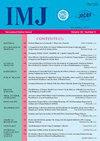食管狭窄性疾病患者手术不良反应的原因分析
Q4 Medicine
引用次数: 0
摘要
食管狭窄需要负责任的态度,选择合理的治疗策略。术中,出血,间质坏死,与间质植入到颈部的路径选择错误相关的并发症,营养血管损伤(拱形破裂),胸膜叶在胸管形成过程中,迷走神经及其分支,气胸,血胸,纵隔出血不受控制,由于后者损伤而需要胸腔引流,医源性脾切除术,气管膜撕裂。术后并发症发生在食管成形术后的不同时间。大多数情况下,术后早期并发症是由伤口引起的:出血和吻合线缝合失败。由呼吸系统引起的并发症有:气管支气管炎、胸膜炎、“充血性”、院内性肺炎和肺不张、胸膜脓肿。术后远期,患者可能出现食管(咽)吻合口狭窄、粘连、瘘管、反流、食道消化性溃疡、疼痛、弯曲和多余的袢、植入物机械损伤相关的并发症、食道癌瘢痕改变、结肠息肉病、原发创伤相关的各种疾病、非特异性并发症。患者复发神经的损伤会引起持续的声音嘶哑和吞咽困难。偶有心律失常,表现为房颤、交感胸膜炎、反流、迷走神经切开术后症状和倾倒综合征、幽门肌切开术不充分导致胃排空延迟。关键词:食管狭窄,食管吻合,术后并发症。本文章由计算机程序翻译,如有差异,请以英文原文为准。
CAUSES OF ADVERSE SURGERY EFFECTS IN TREATMENT OF PATIENTS WITH ESOPHAGUS STENOTIC DISEASES
Esophageal stenosis requires a responsible approach to the choice of rational treatment tactics. Intraoperatively, bleeding, interponate necrosis, complications associated with the wrong choice of the path of the interponate imposition to the neck, damage to the nutrient vessel (the arcade rupture), pleural leaves during the formation of the thoracic tunnel, n. vagus and its branches, pneumothorax, hemothorax, uncontrolled mediastinal bleeding, the need for drainage of the pleural cavity due to injury to the latter, iatrogenic splenectomy, membranous tracheal tear. Post−surgery complications are developed at different times after esophagoplasty. Most often, early postoperative complications occur because of the wound: bleeding and failure of the sutures of the anastomosis line. Complications resulted from the respiratory system are as follows: tracheobronchitis, pleurisy, "congestive", nosocomial pneumonia and atelectasis, pleural empyema. In the remote post−surgery period, the patients may experience: stenosis of the esophageal (or pharyngeal) anastomosis, adhesions, fistulas, reflux, peptic ulcers of the esophagus, pain, inflections and excess loops, complications associated with mechanical trauma of implant, scar−altered cancer esophagus, polyposis of the colon, various disorders associated with primary trauma, nonspecific complications. Damage to the recurrent nerve in patients causes constant hoarseness and difficult swallowing. Occasionally there are cardiac arrhythmias in the form of atrial fibrillation, "sympathetic" pleurisy, reflux, post−vagotomy symptom and dumping syndrome, delayed gastric emptying due to insufficient dilated pyloromyotomy in the patients with a combination of stenosis of the esophageal lumen and esophageal lumen hernia.
Key words: esophageal stenosis, esophageal anastomosis, postoperative complications.
求助全文
通过发布文献求助,成功后即可免费获取论文全文。
去求助
来源期刊

International Medical Journal
医学-医学:内科
自引率
0.00%
发文量
21
审稿时长
4-8 weeks
期刊介绍:
The International Medical Journal is intended to provide a multidisciplinary forum for the exchange of ideas and information among professionals concerned with medicine and related disciplines in the world. It is recognized that many other disciplines have an important contribution to make in furthering knowledge of the physical life and mental life and the Editors welcome relevant contributions from them.
The Editors and Publishers wish to encourage a dialogue among the experts from different countries whose diverse cultures afford interesting and challenging alternatives to existing theories and practices. Priority will therefore be given to articles which are oriented to an international perspective. The journal will publish reviews of high quality on contemporary issues, significant clinical studies, and conceptual contributions, as well as serve in the rapid dissemination of important and relevant research findings.
The International Medical Journal (IMJ) was first established in 1994.
 求助内容:
求助内容: 应助结果提醒方式:
应助结果提醒方式:


